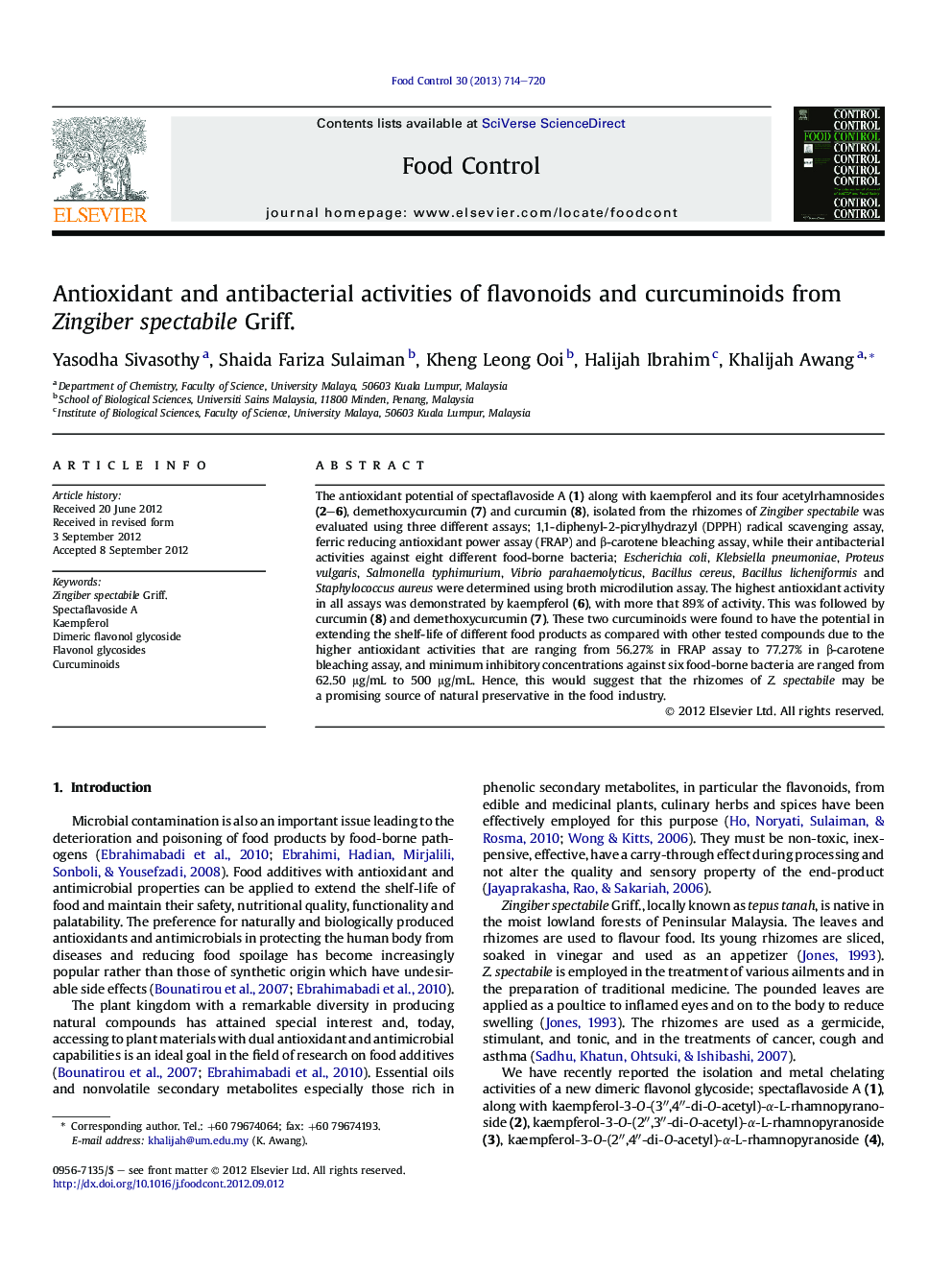| کد مقاله | کد نشریه | سال انتشار | مقاله انگلیسی | نسخه تمام متن |
|---|---|---|---|---|
| 4559492 | 1628426 | 2013 | 7 صفحه PDF | دانلود رایگان |

The antioxidant potential of spectaflavoside A (1) along with kaempferol and its four acetylrhamnosides (2–6), demethoxycurcumin (7) and curcumin (8), isolated from the rhizomes of Zingiber spectabile was evaluated using three different assays; 1,1-diphenyl-2-picrylhydrazyl (DPPH) radical scavenging assay, ferric reducing antioxidant power assay (FRAP) and β-carotene bleaching assay, while their antibacterial activities against eight different food-borne bacteria; Escherichia coli, Klebsiella pneumoniae, Proteus vulgaris, Salmonella typhimurium, Vibrio parahaemolyticus, Bacillus cereus, Bacillus licheniformis and Staphylococcus aureus were determined using broth microdilution assay. The highest antioxidant activity in all assays was demonstrated by kaempferol (6), with more that 89% of activity. This was followed by curcumin (8) and demethoxycurcumin (7). These two curcuminoids were found to have the potential in extending the shelf-life of different food products as compared with other tested compounds due to the higher antioxidant activities that are ranging from 56.27% in FRAP assay to 77.27% in β-carotene bleaching assay, and minimum inhibitory concentrations against six food-borne bacteria are ranged from 62.50 μg/mL to 500 μg/mL. Hence, this would suggest that the rhizomes of Z. spectabile may be a promising source of natural preservative in the food industry.
► Curcuminoids and kaempferol have high primary antioxidant activity and inhibitory effects against food-borne bacteria.
► Demethoxycurcumin can be utilized to maintain nutritional quality and prolong shelf life of food products.
► Rhizomes of Z. spectabile may be a promising natural preservative in the food industry.
Journal: Food Control - Volume 30, Issue 2, April 2013, Pages 714–720